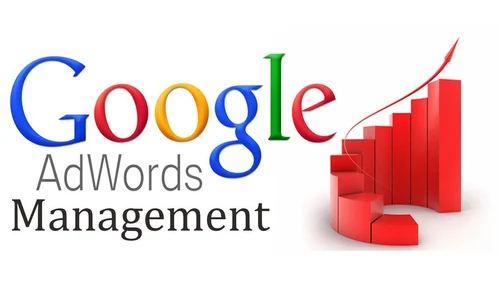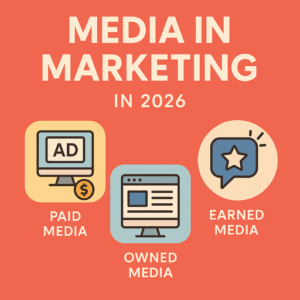Google AdWords, now known as Google Ads, is a powerful tool for businesses looking to increase their online visibility. With the right management strategies, AdWords can help you reach your target audience effectively. But what exactly does AdWords management entail, and why is it essential for your business? Let’s dive in!
Understanding Google AdWords
Overview of Pay-Per-Click Advertising
At its core, Google Ads operates on a pay-per-click (PPC) model. This means you only pay when someone clicks on your ad. This model is particularly attractive because it allows you to control your marketing budget while targeting potential customers who are actively searching for your products or services.
How AdWords Works
When you create an ad, you choose specific keywords that are relevant to your business. When users search for those keywords, your ad has the chance to appear at the top of the search results. The position of your ad is influenced by your bid, the quality of your ad, and the expected impact of extensions and other ad formats.
Setting Up Your AdWords Account
Creating an Account
Getting started with Google Ads is straightforward. Simply go to the Google Ads website, sign up, and follow the prompts to set up your account.
Selecting Your Campaign Type
AdWords offers various campaign types, including Search, Display, Shopping, Video, and App campaigns. Each serves different purposes, so choose one that aligns with your marketing goals.
Defining Your Budget
Setting a budget is crucial. Decide how much you’re willing to spend daily and ensure that your bids align with this budget to avoid overspending.
Keyword Research
Importance of Keywords
Keywords are the backbone of any AdWords campaign. They help connect your ads with users who are searching for your offerings.
Tools for Keyword Research
Utilize tools like Google’s Keyword Planner, SEMrush, or Ahrefs to find keywords relevant to your business. These tools provide insights into search volumes, competition, and related keywords.
Long-Tail vs. Short-Tail Keywords
While short-tail keywords are more general and often highly competitive, long-tail keywords are more specific and usually have lower competition, making them easier to rank for.
Creating Effective Ads
Components of a Good Ad
A successful ad includes a compelling headline, informative description, and a clear call-to-action (CTA). Each element plays a role in attracting clicks.
Writing Compelling Ad Copy
Your ad copy should resonate with your target audience. Use persuasive language and address their pain points to capture their interest.
A/B Testing Your Ads
Testing different versions of your ads (A/B testing) helps determine which performs better. This process is vital for optimizing your campaigns and maximizing ROI.
Ad Targeting Strategies
Geographic Targeting
Narrow your audience by targeting specific geographic locations. This is especially beneficial for local businesses.
Demographic Targeting
Understand your audience’s demographics—age, gender, and income levels—and tailor your ads accordingly to increase relevance.
Behavioral Targeting
Behavioral targeting allows you to reach users based on their online behavior, making your ads more relevant and effective.
Bidding Strategies
Manual vs. Automated Bidding
Manual bidding gives you full control over your bids, while automated bidding can optimize bids in real-time based on your set goals. Choose what works best for your strategy.
Understanding Quality Score
Quality Score is a metric that affects your ad position and CPC (cost per click). It’s based on your ad’s relevance, expected click-through rate (CTR), and landing page experience.
Setting Bids for Success
Determine your bids based on your goals, whether that’s maximizing clicks or conversions. Regularly review and adjust bids as needed.
Monitoring Your Campaigns
Key Metrics to Track
Keep an eye on metrics like CTR, conversion rate, and cost per conversion. These insights help you gauge your campaign’s effectiveness.
Using Google Analytics
Integrating Google Analytics with your AdWords account provides deeper insights into user behavior, helping you make data-driven decisions.
Adjusting Campaigns Based on Performance
Regularly review your campaign performance and make adjustments to improve results. This could involve changing keywords, ad copy, or targeting strategies.
Common AdWords Mistakes to Avoid
Ignoring Mobile Users
With more users accessing the web via mobile devices, ensuring your ads are mobile-friendly is crucial. Neglecting this can lead to missed opportunities.
Not Using Negative Keywords
Negative keywords prevent your ads from showing up for irrelevant searches. This helps improve your CTR and overall campaign efficiency.
Failing to Test Ads
Don’t settle for the first version of your ad. Regular testing is essential for identifying what resonates with your audience.
Advanced AdWords Techniques
Remarketing Strategies
Remarketing allows you to re-engage users who previously visited your site. This can significantly increase conversions by keeping your brand top-of-mind.
Using Ad Extensions
Ad extensions provide additional information and increase the visibility of your ads. Utilize them to enhance your ad’s performance.
Leveraging Audience Insights
Use audience insights to tailor your ads and campaigns to specific user groups, enhancing relevance and effectiveness.
Budget Management in AdWords
Setting and Adjusting Your Budget
Keep a close eye on your spending and adjust your budget based on campaign performance and business objectives.
Understanding Cost Per Acquisition (CPA)
CPA measures how much you spend to acquire a customer. Monitoring this metric helps you evaluate the effectiveness of your campaigns.
Analyzing ROI
Assess your return on investment to ensure your AdWords campaigns are profitable. This analysis informs future budget allocations and strategies.
AdWords for Local Businesses
Importance of Local SEO
For local businesses, combining AdWords with local SEO strategies can maximize visibility and drive foot traffic.
Creating Location-Specific Ads
Target your ads to specific locations to attract local customers. Highlight offers or services that are particularly relevant to those areas.
Benefits of Local Targeting
Local targeting enhances your relevance and connection with the community, making your ads more effective in driving local sales.
Staying Updated with AdWords
Google’s Algorithm Changes
AdWords is constantly evolving. Staying informed about algorithm changes and updates ensures you adapt your strategies accordingly.
New Features and Tools
Google frequently rolls out new features and tools. Regularly check for updates that could enhance your campaigns.
Continuous Learning Resources
Utilize online courses, webinars, and Google’s own resources to keep your AdWords knowledge up-to-date.
Conclusion
In conclusion, effective Google AdWords management can significantly boost your online presence and drive targeted traffic to your website. By understanding the intricacies of campaign setup, keyword research, ad creation, and ongoing monitoring, you can create campaigns that not only meet but exceed your marketing goals.
FAQs
What is the difference between AdWords and SEO?
AdWords involves paid advertising to gain visibility on search engines, while SEO focuses on optimizing your website to rank organically.
How much should I budget for Google Ads?
Your budget depends on your business goals, but starting with a few hundred dollars per month can help you test and optimize your campaigns.
Can I manage my AdWords campaign on my own?
Yes, many businesses successfully manage their campaigns. However, ongoing learning and adjustment are crucial for success.
What are negative keywords, and why are they important?
Negative keywords prevent your ads from showing for specific terms, helping you focus on relevant traffic and improve CTR.
How can I improve my ad click-through rate (CTR)?
To improve CTR, focus on writing compelling ad copy, using relevant keywords, and testing different ad formats.









